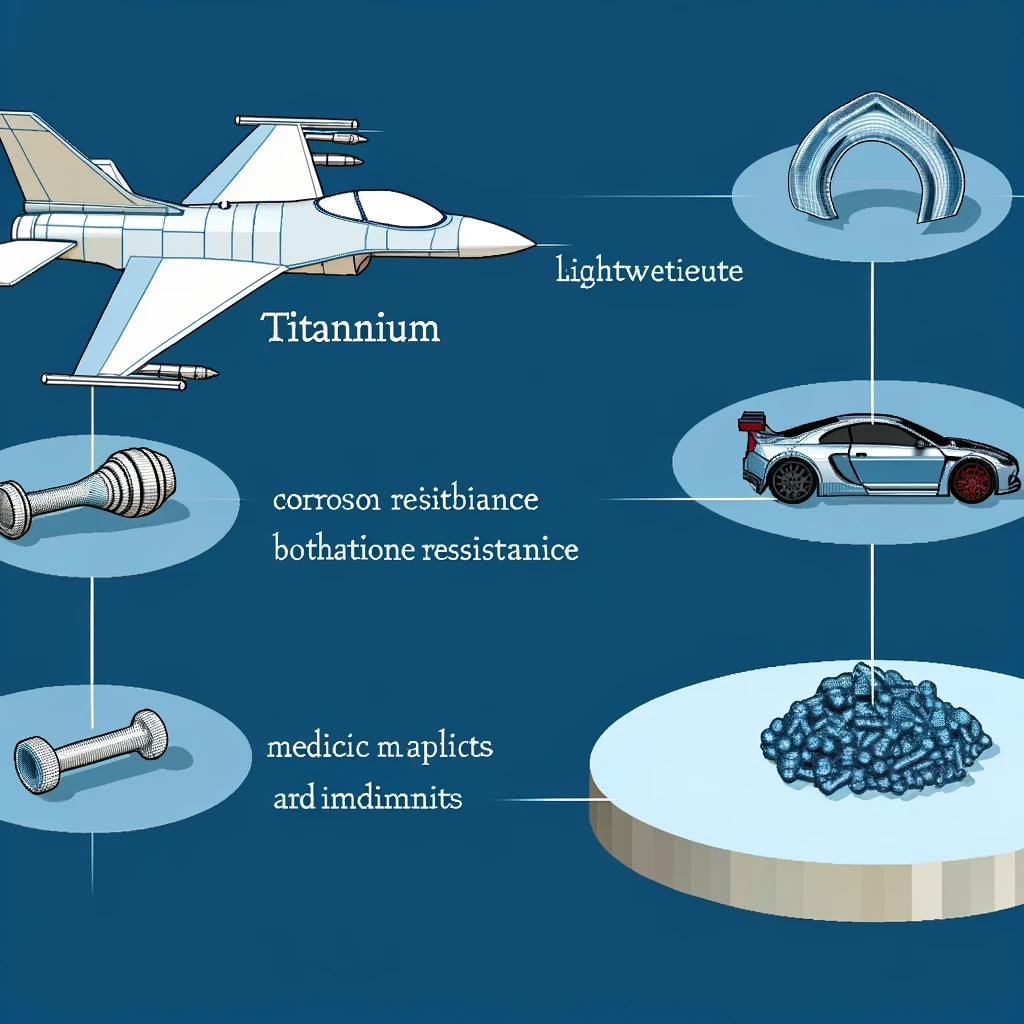Tungsten vs Titanium: Choosing the Right Metal for You
In the vast universe of metals, Tungsten and Titanium shine as stars, known not only for their unique properties but also for their wide-ranging applications. From the depths of the earth to the expanse of space, these metals contribute significantly to our modern world. Choosing the right metal, whether for a wedding band or a spacecraft, involves understanding these materials down to their atomic structure. This guide takes you through an exploration of Tungsten and Titanium, dissecting their properties, comparing their uses in jewelry and industry, and ultimately helping you decide which metal is the right choice for your specific needs.
Properties of Tungsten
Tungsten, symbolized as W on the periodic table, stands out with its remarkable density, strength, and high melting point. Known as one of the heaviest metals in existence, its density is 19.25 g/cm³, rivaling that of gold and uranium. But it’s not just its weight that makes Tungsten exceptional; its melting point of 3422°C (6192°F) makes it the metal with the highest melting point. This characteristic alone opens a realm of applications, especially in environments subjected to extreme heat.
But Tungsten’s resume doesn’t stop there. It exhibits a unique blend of robustness and brittleness, making it incredibly durable yet challenging to work with in its pure form. This paradoxical nature is what led to the development of Tungsten carbide, a compound that harnesses the best of Tungsten’s properties: unparalleled hardness next to diamonds, resistance to scratching, and an impressive ability to withstand wear and tear.
In the world of applications, Tungsten’s density and heat resistance have made it the material of choice for products such as electrical filaments, rocket engine nozzles, and weights and counterweights. Its unparalleled durability and resistance to deformation under high temperatures are not just beneficial but critical in these applications.
Properties of Titanium
Titanium, with the chemical symbol Ti, presents a contrast to Tungsten with its low density, high strength, and remarkable corrosion resistance. Weighing in at just 4.506 g/cm³, it’s almost as strong as steel but about 45% lighter. This lightness, combined with its resistance to rusting and corrosion by sea water and chlorine, makes Titanium the darling of industries that demand strength without the weight penalty.
Beyond its physical strengths, Titanium’s biocompatibility stands out, making it a preferred material in medical applications, including implants and prosthetics. Its ability to withstand the corrosive power of the human body without being toxic is a marvel of material science.
In aerospace, automotive, and sports equipment, Titanium’s strength-to-weight ratio is a game-changer. Its ability to endure the punishing conditions of space and the relentless stress of racing environments, all while minimizing weight, illustrates the critical role it plays in pushing the boundaries of engineering and design.
Tungsten vs Titanium in Jewelry
When it comes to jewelry, choosing between Tungsten and Titanium is not just a matter of aesthetics but understanding the distinct properties that each metal brings to the table. Tungsten’s incredible hardness means it is highly scratch-resistant, maintaining its polish and shine for decades. Its weight gives jewelry a substantial, luxurious feel. However, its brittleness means it can crack under severe impact.
Titanium, on the other hand, offers a lightweight alternative that is also hypoallergenic, making it perfect for those with sensitive skin. Its strength and corrosion resistance ensure that Titanium jewelry can withstand daily wear and tear, including exposure to saltwater and chlorine, without losing its luster.
In terms of appearance, Tungsten offers a darker, more gunmetal gray finish, while Titanium can be found in a variety of colors through anodization. The choice between the two often comes down to personal preference in weight and color, and the specific demands of the wearer’s lifestyle.

Industrial and Other Applications
In industry, the roles of Tungsten and Titanium are both distinct and critical. Tungsten’s high density and melting point make it invaluable in applications requiring materials that can withstand extreme conditions, such as in military armor, radiation shielding, and high-temperature furnace parts. Its unparalleled hardness also makes it ideal for cutting tools and abrasives.
Titanium’s strength, lightness, and resistance to corrosion have cemented its role in aerospace and automotive engineering, where reducing weight while maintaining structural integrity is paramount. Its biocompatibility has revolutionized medical devices, offering patients safer and more durable options for implants and prosthetics.
Both metals also play unique roles in consumer electronics, sporting goods, and even as catalysts in chemical reactions, showcasing their versatility and importance across a wide range of applications.
Making the Right Choice for You
Choosing between Tungsten and Titanium involves weighing several factors, including cost, intended use, and personal style preferences. Tungsten’s density and scratch resistance make it ideal for those seeking durable, heavyweight jewelry or industrial applications requiring extreme material properties. Titanium’s lightweight, strength, and corrosion resistance are better suited for aerospace, automotive, and medical devices, as well as for those preferring lighter, hypoallergenic jewelry.
Consider your lifestyle, budget, and the specific demands of the application when making your choice. Both metals offer unique advantages, and the right choice depends on aligning those advantages with your specific needs.
Conclusion
In the debate between Tungsten and Titanium, there is no clear winner; each metal serves distinct purposes and excels in different environments. Whether you’re choosing a wedding band or specifying materials for aerospace engineering, understanding the unique properties of Tungsten and Titanium is crucial. By considering the factors outlined in this guide, you can make an informed decision that best meets your needs, ensuring satisfaction and performance for years to come.




